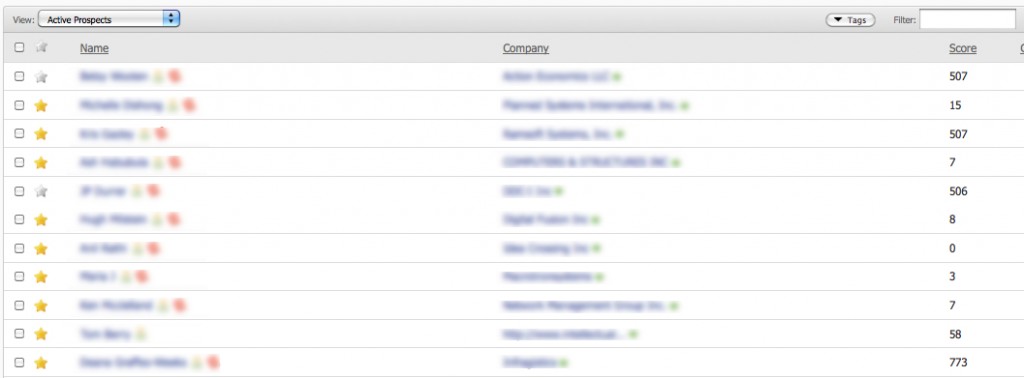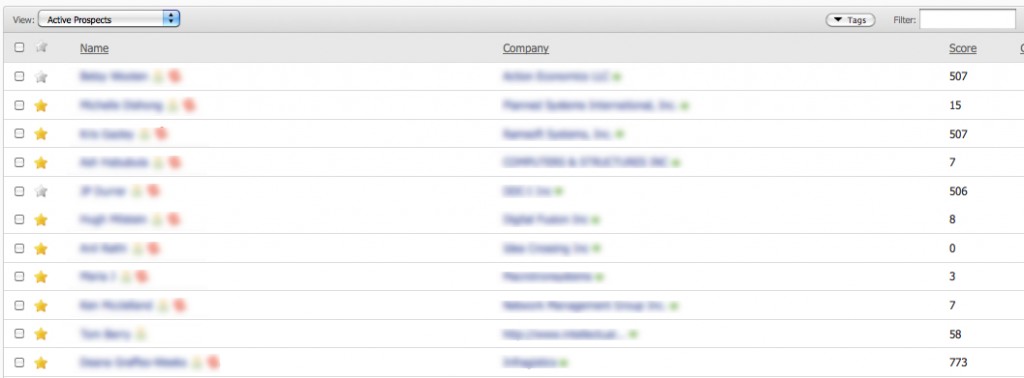by gabriel_sales | Oct 18, 2012
Quite obviously, business today is increasingly being done over the internet. This means that to succeed as a business in today’s globally connected world, your marketing strategy must have a significant digital component.
The answer to the question, “What is digital marketing?” is not as complicated as one may think. Digital marketing is essentially the same as traditional marketing; the only difference is the platform from which you send your message. Instead of communicating only via print outlets, your message now needs to come from multiple sources such as websites, blogs, emails and social networks.
The great opportunity that comes from these new forms of media is that they allow for a variety of new and highly effective ways of finding customers. We can now relay our message directly through e-newsletters; or we can reach customers by inviting them to watch self-made videos and podcasts. We can also find potential customers by creating websites and blogs that are relevant to our service or product. Finally, creating well-crafted pages on social networks can also find you potential customers.
There are many ways you can implement marketing online, and you must consider each of them carefully if you hope to create an effective marketing strategy.
It is first important to understand what is different about each of these platforms and how to use each of them to your advantage. For example, it is a very different thing to start a Twitter account than it is to send an e-newsletter. Another aspect to consider is that the digital world creates a two-way communication model that operates in a way that traditional one-way media never could. Negotiating this two-way form of communication requires you have knowledge of the new platforms so you can best exploit them to your advantage.
Overall, we should not see what digital marketing is as a vast departure from traditional marketing. The overall intent is still the same: we want to present potential customers with information to make an informed purchase. So, the difference is not what we do, but how we do things. Each new form of media carries with it its own internal logic; once we understand that logic, we can incorporate these media into our overall marketing strategy.
by gabriel_sales | Oct 8, 2012
Three Best Practices for Better B2B Lead Scoring
The new rules of engagement require you to get smarter about how you work the phone to ensure that you maximize every dollar spent on phone work. One requirement for b2b lead generation is to align your inside sales team with your marketing team by intelligently leveraging a marketing automation platform like Pardot for better lead scoring. This blog is part 2 of a 2 part series. Part 1 addressed the basics of sales b2b lead scoring to improve the performance of your sales and marketing b2b lead generation investment. Part 2 now introduces a framework to make your content marketing easier with a couple simple tips and some tool suggestions.
What’s does a solid process look like?
A solid process requires the basics we discussed in Part 1 of this series and the ability to capture both inferred data and direct data.
As each lead takes any action, their score will change. Your sales reps need to leverage your CRM to capture the Direct Data when they engage the prospect. Your Marketing teams will also collect direct data with well-built forms for inbound leads. Marketing Automation Software and a smart Content Management System makes collecting inferred data easy because it will track what type of content your prospects are looking at when they are visiting your website and social media sites. What you end up with is a composite score. The higher the score, the more qualified the lead. Below is a picture pulled from our platform.

How do I Score My Content? – B2B Lead Scoring Best Practice #2
The key to making your marketing automation software more productive is to design content around specific buying stages.

From there B2B lead scoring is easy:
- Educational Content like basic blog posts would get a score of 1
- Richer Educational Content and Whitepapers would get a score of 5
- Road Maps, Media Kits and Sales Sheets, Comparisons would get a score of 25
- Rate Cards, About Us Pages, Case Studies, and Technical Sheets would get a score of 100 and you would immediately flag these for sales to jump on to determine next actions
What if I Don’t Have A Lot of Content? – B2B Lead Scoring Best Practice #3
You need to get smarter about making your content work harder with a smart content management system that’s easy for non-technical employees to use (like WordPress) and a custom install of Gabriel Sales Digital Sales Basecamp™ as a tool to both, isolate content and to create landing pages, with a click of a mouse. This system allows you to customize your content for specific verticals, repurpose you content for specific decision makers so they can self-educate and, simultaneously, to isolate your content around specific buying stages.
The second step is to use a smart content management system like Gabriel Sales Digital Sales Basecamp and your Blog to organize your content so buyers can self- educate more easily and so you can offer your buyer different stage content on the same page.
Learn how to build a powerful B2B lead generation system, integrating sales and marketing, by viewing our resource page here.
by gabriel_sales | Oct 4, 2012
B2B lead generation has changed more in the past 18 months than we have seen in the previous 12 years we have been providing outsourced b2b lead generation through sales lead scoring as an outsourced b2b lead generation company. One of the largest drivers is the simple fact that your buyers are answering the phone 50% less than they did 18 months ago. Across the board our calls to connect ratio (someone actually picking up the phone) has dropped from 15%-22% to 8%-12%. With all these changes, it’s critical that you maximize the result of every lead, which requires you do a better job of lead scoring.
This blog is part 1 of a 2 part series. Part 1 will address the basics of sales lead scoring to improve the performance of your sales and marketing b2b lead generation investment. Part 2 will introduce a lead scoring best practices framework to make your content marketing easier with a couple simple framework tips and some tool suggestions.
1. What is sales lead scoring?
Sales lead scoring is the ability to figure out where someone is in their buying process. It is a process that combines information gathered by you telemarketers through some basic qualifying questions with the type of content a buyer is consuming and creating a numerical value that ranks the buyers level of interest and their ability to transact with you (are they an influencer or can they sign the agreement?). Sales lead scoring allows sales and marketing to quickly flag who should go to higher end sales reps and who should not.

2. What is the first step in lead scoring?
It’s critical that everyone agrees on the “lead” definition. The more complex the sale is, the tougher this can be, especially if your sale requires someone on the buyer side to champion it through the organization or if the technical influencer takes the lead in the early buying process. The important thing is that there is agreement. And the most important person to get agreement from is your sales team There’s no point in your marketing team scoring leads alone because if sales does not agree with marketing on what a quality lead is there will be conflict and you are simply going to end up where you started.
3. Why do I need to score sales leads?
In a word: Money. Scoring sales leads will lead to more revenue because better leads (buyers ready for sales) will get to your sales team faster. Scoring leads will also save you money because leads that are not ready to buy can be managed by less expensive inside reps during the early education stages of your buying cycle or even better by your marketing team leveraging digital content in an automated process.
4. What Types of Data Do I Need to Score Leads?
Lead scoring is comprised of two parts: “direct” and “inferred” information; both types of information are important. Direct is gathered by your inside sales team when they pick up the phone and ask buyers questions and “Engage” them. It’s also gathered by keeping track of the title, business vertical and company size etc. Inferred information is gathered by keeping tracking of the type of content your buyer is consuming.
Direct Data – When your inside rep engages the buyer, he/she figures out if the leads is a fit. Does your your product meet a need? Does the buyer know their need? Can the buyer sign the check? Is the buyer an influencer or not? Is there a budget for the project or not? Also the rep can cover any gaps in the basic lead info that marketing did not collect like company size, industry segment, job title, and location.
Infered Data – Data gathered from the digital consumption of your content: number of pages visits, specific web pages visited, recency of response, email activity, social media activity, online event registrations or downloads.
Hopefully this blog was helpful in explaining the basics of sales lead scoring. In part 2 we will discuss what a solid lead scoring best practice process looks like and make some recommendations around how to frame your content and tools you can use to make your content work harder.
Learn how to build a powerful B2B lead generation system, integrating sales and marketing, by viewing our resource page here.




